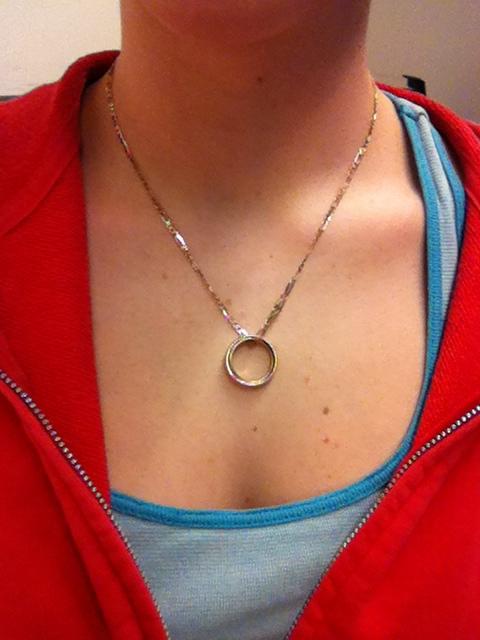We all have different ways of commemorating our lost loved ones. Some people wear ashes, while others keep trinkets on themselves of the hair of their lost loved ones. While some might find it comforting to carry the physical remnants of a person’s body with them, others might prefer a piece of clothing or jewelry that the lost loved one wore before he or she died.
For Lauren Lage-McAdams, she finds that wearing her parents’ wedding rings—symbols of everlasting love and commitment—as a necklace helps her with her grief over the losses of both of them within five months of each other.
Lage-McAdams theorizes that her father most likely couldn’t “handle watching her mom suffer anymore, and her mom in turn couldn’t live without him.”
According to an article from The Huffington Post, the love story of Lage-McAdams’ parents began when they met while working at the post office and after they both had already experienced marriages that didn’t last. After a dozen years of marriage, Lage-McAdams’ father (not biologically related to her yet she considered him to be her real dad) died in September 2012 in the midst of his wife’s six-month ongoing battle with cancer. Her mother lost her battle in February 2013. Lage-McAdams theorizes that her father most likely couldn’t “handle watching her mom suffer anymore, and her mom in turn couldn’t live without him.”
…she wears her special necklace because “wearing my parents’ wedding rings is a way for me to be reminded of their presence in a beautiful way, because their existence in my life was a beautiful thing.”
As the “absolute soulmates” she describes them to have been, Lage-McAdams explains that she wears her special necklace because “wearing my parents’ wedding rings is a way for me to be reminded of their presence in a beautiful way, because their existence in my life was a beautiful thing.”
Lage-McAdams’ story serves as a wonderful reminder of how we can keep lost loved ones to our hearts both literally and figuratively no matter what we choose to wear in their honor and keep as remnants of our memories of them.
Learn more about end-of-life happenings and current events here.

 Close to Her Heart: One Daughter Wears Her Late Parents’ Wedding Rings in Their Memory
Close to Her Heart: One Daughter Wears Her Late Parents’ Wedding Rings in Their Memory





 Composting Bodies Is Now Legal in a Dozen States
Composting Bodies Is Now Legal in a Dozen States














